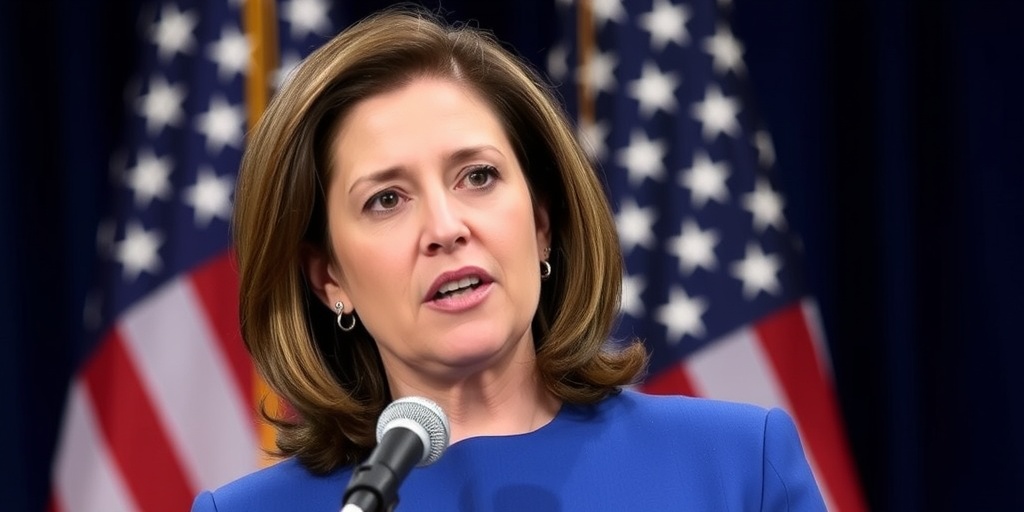Now Reading: Trump: Tariffs to End When Opioid Deaths Drop, But Rates Have Already Decreased
-
01
Trump: Tariffs to End When Opioid Deaths Drop, But Rates Have Already Decreased
Trump: Tariffs to End When Opioid Deaths Drop, But Rates Have Already Decreased

Title: Trump Administration Imposes Tariffs Amid Ongoing Fentanyl Crisis
In a surprising move, the Trump administration recently imposed tariffs on imports from Canada and Mexico, despite a prior agreement to delay these tariffs contingent upon the neighboring countries’ cooperation in addressing the fentanyl crisis. One month ago, President Trump had committed to postponing tariffs after both nations pledged to take significant steps in curbing the influx of fentanyl—a potent opioid—into the United States. However, the administration is now claiming that the necessary action has not been taken, justifying the implementation of tariffs by stating that they would remain until drug-related deaths in the U.S. show a substantial decline.
This new standard set by the administration poses challenges, primarily due to the lack of real-time national data on fentanyl overdose deaths. As it stands, it is nearly impossible to ascertain whether Canada and Mexico have sufficiently tackled the issue since February, as required by the White House. Commerce Secretary Howard Lutnick emphasized the administration’s criteria in a recent CNBC interview, stating, “We need to see material reduction in autopsied deaths from opioids,” before considering any tariff relief.
Critics of the administration’s deadline point out that current methodologies for tracking drug overdose deaths are lacking, and there is no conceivable way to know if there has been an adequate response from either Canada or Mexico. While it is true that real-time data is unavailable, evidence from recent months indicates that fentanyl-related deaths in the U.S. have been on a decline. Statistics from the previous year show a statistically significant reduction in fentanyl deaths through September, providing a glimmer of hope in an otherwise grim public health crisis marked by unprecedented rates of overdose fatalities.
As per the latest data from the Centers for Disease Control and Prevention (CDC), the death toll from fentanyl overdoses has been consistently decreasing since January of the previous year. The most recent report, published in early February, indicated that an estimated 2,700 Americans succumbed to fentanyl overdoses in September. This figure marked a noteworthy decrease compared to over 5,000 deaths recorded in May 2023.
Despite these positive trends, drug overdoses continue to be a major public health issue, claiming more lives than traffic accidents or gun-related fatalities. The underlying causes for these reductions in deaths remain under investigation. Public health researchers credit the increased availability of naloxone—a medication that can reverse opioid overdoses—as a critical factor in saving lives. Additionally, more access to addiction treatment is being recognized as a vital resource. There are also indications that Mexican drug cartels have recently limited the production of fentanyl, although how much this has affected the overall statistics remains uncertain.
Nevertheless, local variations in overdose rates offer a glimpse into the complexities of the issue. In Cook County, Illinois, which encompasses Chicago, drug overdose deaths have continued to decline. Conversely, King County, Washington, including Seattle, experienced a spike in overdose deaths as recently as November, underscoring the erratic nature of drug mortality trends influenced by factors like drug purity and local supply conditions.
Though the data released by the CDC is provisional and typically takes a long time to finalize, it indicates that the trend of decreasing fentanyl deaths has persisted for over a year. Still, experts caution that the figures may not tell the whole story. For instance, Hawre Jalal, an associate professor at the University of Ottawa, expressed concern over the accuracy of any estimates beyond December 2023 due to potential gaps in reporting. He mentioned that the significant surge in overdose deaths during the pandemic may have merely returned to a long-term upward trajectory.
As the Trump administration holds fast to its punitive measures, it could take years before any reliable metrics are available to determine whether Canada and Mexico have met the administration’s standards for tariff relief. The ambiguity of the current state of affairs surrounding opioid fatalities and the complexities of measuring progress pose substantial hurdles to concluding whether the tariffs will indeed contribute to a resolution of the fentanyl crisis.
In conclusion, while the imposition of tariffs signifies the U.S. administration’s urgent approach to combat the opioid epidemic, the effectiveness of such measures remains questionable. With local and national data disparities and the prolonged timeline for comprehensive drug mortality statistics, the goal of significantly reducing fentanyl-related deaths in the U.S. seems as distant as ever. Further collaboration with neighboring countries coupled with a robust strategy addressing the addiction crisis will be essential in order for the administration to approach any meaningful resolution.
Stay Informed With the Latest & Most Important News
Previous Post
Next Post
-
 01New technology breakthrough has everyone talking right now
01New technology breakthrough has everyone talking right now -
 02Unbelievable life hack everyone needs to try today
02Unbelievable life hack everyone needs to try today -
 03Fascinating discovery found buried deep beneath the ocean
03Fascinating discovery found buried deep beneath the ocean -
 04Man invents genius device that solves everyday problems
04Man invents genius device that solves everyday problems -
 05Shocking discovery that changes what we know forever
05Shocking discovery that changes what we know forever -
 06Internet goes wild over celebrity’s unexpected fashion choice
06Internet goes wild over celebrity’s unexpected fashion choice -
 07Rare animal sighting stuns scientists and wildlife lovers
07Rare animal sighting stuns scientists and wildlife lovers





















